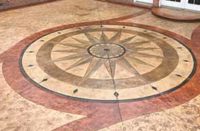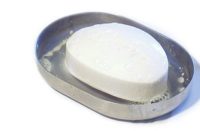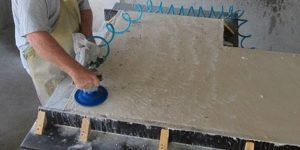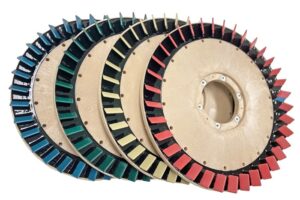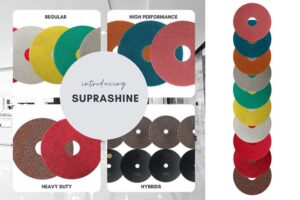When polishing concrete using resin- or metal-bonded diamond abrasives, how do you know that the diamonds under your machine are functioning effectively?
Diamonds are expensive consumables that impact the concrete by removal and flattening during the grind and hone stages or by refining the clarity and shine during the polish. Your polished floor depends on the diamonds doing their job.
Visual inspection
Many contractors simply order whatever diamonds are on sale. They open the box at the job site, place the diamonds onto the plates and start the grinder. What could be wrong with that?
I suggest a visual inspection before you grind to determine if your diamonds are open and ready to cut.
If your diamonds are open, you will see shiny sparkles and light refraction, or “bling.” If your diamonds are covered by the resin that holds them in place, a common issue with diamonds fresh from the manufacturer, you will see a smooth, closed surface. Open up the diamonds prior to use. Either run them on rough concrete or use a hand sander to abrade the diamond pads until the bling appears and the bottom is no longer sealed. Now the diamonds will start cutting evenly on your first pass.
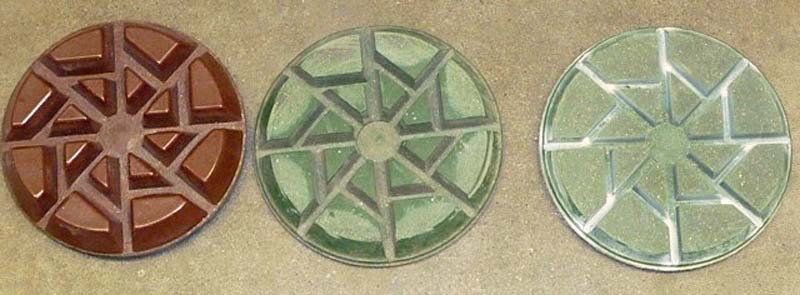
Next, inspect your used diamonds. Note how many diamonds there are and how uniformly they are dispersed. Manufacturers load their diamond tooling with different amounts of actual cutting diamonds, so quantity and uniformity matter. If you cannot see bling, the diamonds cannot cut concrete.
Some sets will have slick, unused, sealed areas on each segment. Some resin diamonds may have black on the bottom. Diamonds that get too hot and become “glazed,” or burned, do not refine or cut effectively and will leave discoloration on the concrete. Diamonds that open and wear evenly are the most economical, even when you pay more upfront. This same principle works for metal-bond and resin-bond diamonds.
Verifying the right grit and bond
Now you know the diamonds are open. But are they the right diamonds for the slab? Turn off the vacuum and make a pass, then examine the dust left behind. If there is little to no dust, your diamonds are just spinning, not cutting. If dust is evenly distributed and representative of the grit level, then the diamonds are cutting and they are right for that step. If there are piles of dust on either side of the machine, then you are using the wrong bond or the grit is too low. Adjusting after the first pass will save you both time and money on diamonds.
Now turn the vacuum back on and listen to the sounds that the diamonds make: swish, swish, swish. If the sound is even and continuous, and the machine is not pulling from “diamond grab,” then your cut will be effective.
Similarly, when cutting wet, check to see if the water is cloudy from concrete removal or if it is clear. Remove or “inch up” the skirt and look. After one pass, turn the machine off and adjust as necessary. The sooner these informed decisions are made, the more refinement, clarity and reflectivity the concrete will have.
Grinding effectively
During your initial cut with your grinder, the floor should change color from dark gray to light and dusty gray. Generally, troweled concrete will be darker in color.
If the diamonds are open and working correctly, the floor will be scratched evenly and the color of the concrete will be uniform. If the color is uneven, the floor has not been cut uniformly in the places where it looks dark. Time to make an adjustment. Either cross-cut or diagonally cut the floor with that same grit, or go wet, or change the bond or grit level of the diamond. The first cut is the most important and produces the canvas for your final polish, so make sure it is done right.
Polishing effectively
The best way to tell if a resin diamond is polishing effectively is to clean the floor and take gloss meter readings after each grit level. Each new set of readings should average a higher gloss than the previous step. The actual number is less important than verifying an increase (typically 5 to 10 points) after each higher-grit diamond. If there is no increase, inspect to find out why. If the diamonds are open and not glazed from heat, try another diamond brand at the same grit level.
Keep equipment in good condition
Ensure that your equipment is tuned up and running with equal pressure on all heads. I recently used a rental machine with heads not even close to level. This direct-drive machine cut heavily on the right and barely kissed the surface on the left, requiring serious overlapping to achieve an even cut. Doing twice the work made a significant dent in profit.
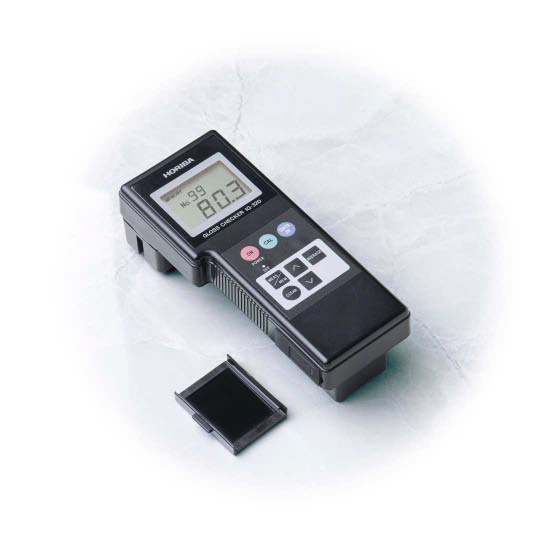
More tips for diamond effectiveness
- Use a carpenter’s pencil to mark X’s on low areas and areas with random scratches, then use the next grit of diamonds. If the pencil marks are still visible, then the diamonds are not working well enough to remove the scratches, either.
- Weight distribution of the machine matters. Adjust by adding or removing weights or by counterweighting the handle.
- Changing the number of diamonds or the number of segments per diamond tool also affects the weight distribution. This is the principle of high-heeled shoes: One point of pressure makes a greater impact and cuts more aggressively than a larger contact area. By spreading out the pressure, you can change the scratch pattern and the result.
- The machine speed and operator pace can either assist or hamper the cutting. When your operator says the diamonds are not cutting, speed and pace should be adjusted first.
- If your grinder can rotate in both directions, changing directions can open up the diamonds to cut more effectively.
- Clean your diamonds after use, then inspect for even wear and diamond exposure. Diamonds have channels for a reason. When wet, these channels allow slurry to run through, and when dry, they allow dust to be picked up by the vacuum. When these channels are clogged, the diamonds ride on top of the slurry or dust and cut less effectively. Also, cleaning your diamonds allows you to monitor inventory, so you can order before your next job instead of having diamonds shipped overnight.
Concrete polishing is not an easy craft, and unless you get lucky, you’d better get educated. There is so much to know about diamonds, chemicals, instruments and equipment, not to mention actually running the business. Inspect your diamonds and see the positive impact that just this one item can have on your bottom line.
Until next time, happy polishing!
Jennifer A. Faller has been in the surface preparation industry for the past 15 years as a decorative concrete contractor, technical consultant and owner of a distribution company. Currently, she is business development manager for Vexcon Chemicals and lead trainer for the Certi-Shine brand of polished concrete materials. Contact her at [email protected].
